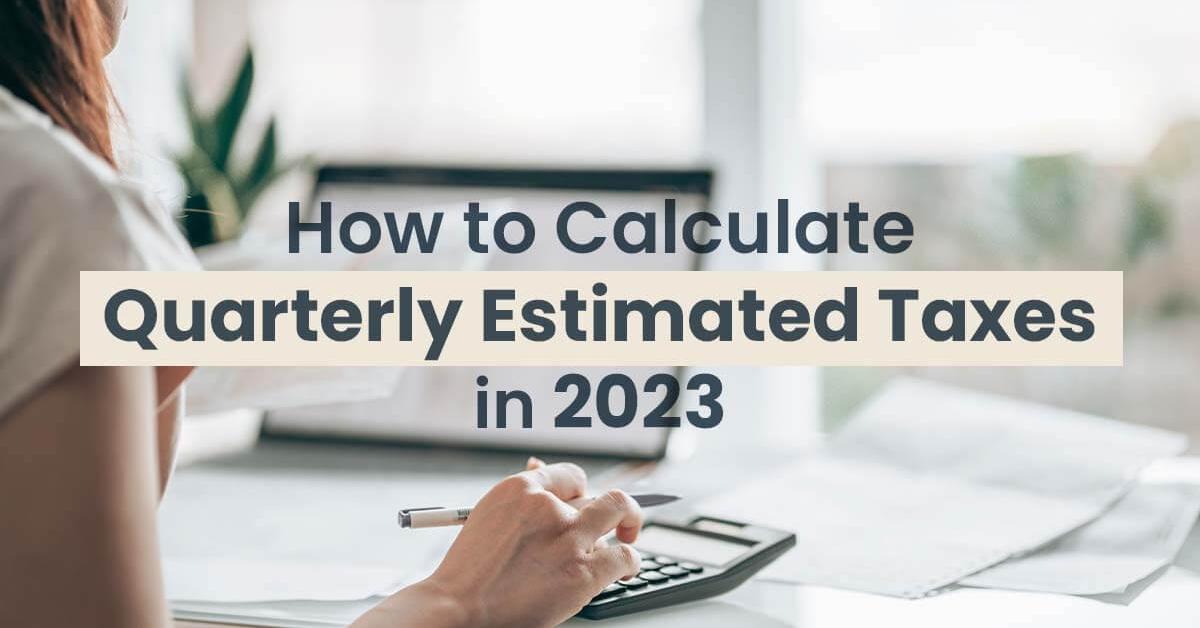One of the most frustrating aspects of running a business is understanding how to manage your taxes. Because of how complex federal tax regulations are, it is easy for a business owner to commit errors that lead to an audit.
It’s possible that you like the way that the majority of non-business individuals pay their taxes: Businesses set aside a tiny amount of each employee’s paycheck for the IRS.
The rules for non-workers are, nonetheless, slightly different. In general, self-employed individuals and business owners who earn a set amount of money annually are required to pay anticipated quarterly taxes. You may calculate your estimated self-employment taxes using a self-employed quarterly tax calculator, which is accessible.
The government expects you to pay taxes on your wages as you receive them, and if you don’t have a manager who will take care of it for you, then it is your responsibility. To submit your taxes and pay them everything back, you cannot just wait until April. For small businesses, keeping up with projected tax payments is essential, even though it is mandatory for many taxpayers, especially if you’re required to pay self employment taxes or SECA taxes.
Tax Estimation Definition
Instead of withholding taxes, independent contractors and company owners pay the IRS using estimated taxes. Employees or company owners who accept tax forms other than a W-2 are expected to pay their taxes directly to the IRS four times a year. This effectively eliminates the tax that many people’s employers have been holding back.
Any taxable earnings that you must pay in full outright, with no tax withheld, are subject to estimated taxes. Interest, stock awards, capital gains, and other self-employment income might all fall under this category.
Understanding various tax laws is essential if you are starting a business or have previously had one since it will help you determine your tax liability and prevent any unnecessary fines and penalties from the law.
Which Individuals Must Pay Estimated Taxes?
The vast majority of independent contractors and businesses are required to refund quarterly estimated taxes. In light of your particular circumstances, it might not be necessary for you.
How much money you will spend overall will ultimately decide everything. You should start paying quarterly estimated tax payments again if your tax returns show an expense of $1,000 or more, including any estimated payments you have already paid.
Your Estimated Tax Calculation
If you are self-employed and have revenue from sources like:
- Income from independent work
- Partnership-based alimony income
Use Form 1040-ES to submit your estimated taxes for sales of specific stocks. For you to estimate your projected tax payments for the current year, this form also includes a worksheet. Your AGI, or adjusted gross income, and tax deductions for the year must be calculated and entered into the spreadsheet.
If you work for yourself, you may also determine your taxable income using a self-employed quarterly tax calculator. A penalty may be assessed at year’s end if your taxes are undervalued. If you work for yourself, you must pay both your self-employment tax and income tax as part of your quarterly anticipated tax payments. Also, be sure to take your income tax bracket into account.
Paying Estimated Taxes Quarterly: Is It Required?
In some situations, an employer may deduct money from your primary source of income, but you may also have earned additional money. If your current taxes and tax withholding total about 90% of the total tax you owe for the year, you don’t have to make quarterly estimated tax payments.
To figure out what you owe, you can also go to your most recent tax returns. There is no need to make further payments in advance if you have already paid the majority of the taxes you owed for the previous year. The Safe Harbor regulation refers to this.
You will also be required to pay a little bit extra if your salary is greater. If your AGI exceeds $150,000, you must pay back 110% of your entire tax liability from the prior year in order to avoid worrying about paying quarterly estimated taxes. If you are married and filing separately from your spouse but meet all other filing requirements, then the higher threshold is only necessary if your taxable income exceeds 75,000 dollars.
Conclusion
Consider that you are concerned about providing for their requirements or that you do not have the time to carry out the necessary research. You may utilize a self-employed quarterly tax calculator in that situation, or you may decide to seek help from a tax expert. Your company would save money and avoid fines if you hired a specialist for your 1099 benefits. You will have enough time to focus on the job of your company to advance. Keeping track of business expenses can get a bit confusing but if you open a business bank account, you can keep track of all your business expenses in one place.
